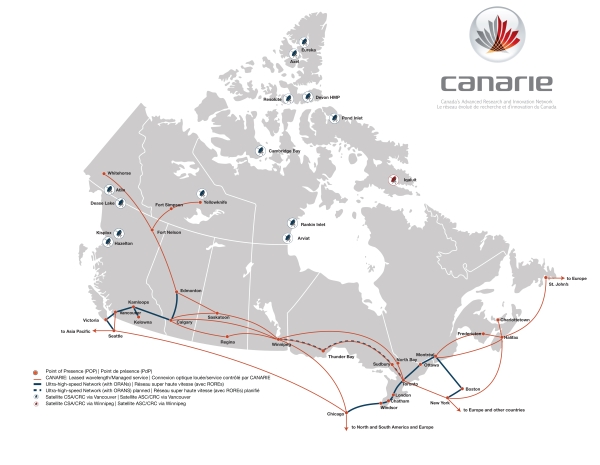There was good news and bad news in the announcement that Ottawa will fund the CANARIE research network for $62 million over the next three years.
On the one hand, the money is more than the $40 million over two years originally announced by the Harper government in the spring budget.
On the other hand, it works out to less money a year than the network got over each of the past five years — $21 million compared to $24 million.
That’s a 15 per cent drop in annual funding, says CEO Jim Roche, which means membership and user fees to the institutions that link to the network will be going up.

Still, he’s pleased with what the non-profit organization that links universities, colleges, research institutions, hospitals and government labs got.
With funding assured for several more years CANARIE can continue to build out its core network, with the goal of buying more fibre to be able to offer 100 Gbps service across the country; to develop software that researchers can use for high performance and cloud computing; and to offer cloud computing and expertise to small and medium businesses test next-generation products.
For example, a company that develops an online game may want to use the network to test the pre-production software’s ability to handle thousands of users at once. The offer is open only to companies for non-commercial applications. Once the software is sold commercially, companies have to turn to commercial cloud providers.
“We’re effectively helping the adoption of digital technologies in the private sector,” Roche said.
Called the Digital Accelerator for Innovation and Research (DAIR) program, SMBs have been able to use CANARIE’s network on a trial basis for free for the past year for this kind of work. But starting next April the network will charge a nominal few hundred dollars for its use, Roche said.
While the biggest chunk of CANARIE’s funding comes from Ottawa, that doesn’t bother Roche. Similar research networks around the world rely on government funding, he said, and besides, “We are an instrument of government.”
Increasingly it charges user fees and membership fees, he said, so only 40 per cent of the cost of the infrastructure comes from the federal government. Sixty per cent comes from provinces and those attached to the network.
As to why Ottawa increased its commitment, Roche said he doesn’t know but guesses that at the time of the initial announcement Ottawa was thinking in terms of two year commitments. Then the time horizon changed.
Roche said he was quietly told by a bureaucrat that “this happens all the time.”